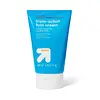What's inside
What's inside
 Key Ingredients
Key Ingredients

 Benefits
Benefits

 Concerns
Concerns

 Ingredients Side-by-side
Ingredients Side-by-side

Water
Skin ConditioningUrea
BufferingDimethicone
EmollientPetrolatum
EmollientGlycerin
HumectantCetyl Alcohol
EmollientStearyl Alcohol
EmollientCetearyl Alcohol
EmollientPolysorbate 60
EmulsifyingCetyl Esters
EmollientDistearyldimonium Chloride
Steareth-21
CleansingSteareth-3
EmulsifyingPropylene Glycol
HumectantDiazolidinyl Urea
PreservativeMethylparaben
PreservativePropylparaben
PreservativeMethyl Gluceth-20
HumectantLavandula Angustifolia Oil
MaskingChamomilla Recutita Extract
Skin ConditioningAlcohol Denat.
AntimicrobialMentha Piperita Oil
MaskingEucalyptus Globulus Leaf Oil
PerfumingMenthol
MaskingGlyceryl Stearate
EmollientAloe Barbadensis Leaf Juice
Skin ConditioningParfum
MaskingStearamidopropyl Pg-Dimonium Chloride Phosphate
Disodium EDTA
Tocopheryl Acetate
AntioxidantAscorbic Acid
AntioxidantHydrolyzed Jojoba Esters
Skin ConditioningPotassium Hydroxide
BufferingRetinyl Palmitate
Skin ConditioningWater, Urea, Dimethicone, Petrolatum, Glycerin, Cetyl Alcohol, Stearyl Alcohol, Cetearyl Alcohol, Polysorbate 60, Cetyl Esters, Distearyldimonium Chloride, Steareth-21, Steareth-3, Propylene Glycol, Diazolidinyl Urea, Methylparaben, Propylparaben, Methyl Gluceth-20, Lavandula Angustifolia Oil, Chamomilla Recutita Extract, Alcohol Denat., Mentha Piperita Oil, Eucalyptus Globulus Leaf Oil, Menthol, Glyceryl Stearate, Aloe Barbadensis Leaf Juice, Parfum, Stearamidopropyl Pg-Dimonium Chloride Phosphate, Disodium EDTA, Tocopheryl Acetate, Ascorbic Acid, Hydrolyzed Jojoba Esters, Potassium Hydroxide, Retinyl Palmitate
Petrolatum
EmollientPEG-8
HumectantUrea 15%
BufferingGlycerin
HumectantC13-15 Alkane
SolventDimethicone
EmollientSalicylic Acid 5%
MaskingPolyglyceryl-3 Polyricinoleate
EmulsifyingCetyl PEG/PPG-10/1 Dimethicone
EmulsifyingDisteardimonium Hectorite
StabilisingMalic Acid 2%
BufferingPEG-40 Stearate
EmulsifyingCetyl Diglyceryl Tris(Trimethylsiloxy)Silylethyl Dimethicone
Emulsion StabilisingPEG-40 Sorbitan Peroleate
EmulsifyingBehenyl Behenate
EmollientPolyglyceryl-2 Dipolyhydroxystearate
Skin ConditioningPolyglyceryl-3 Diisostearate
EmulsifyingPolyhydroxystearic Acid
EmulsifyingSodium Chloride
MaskingBisabolol
MaskingBorago Officinalis Seed Oil
EmollientMandelic Acid
AntimicrobialSqualane
EmollientWater
Skin ConditioningTocopherol
AntioxidantPetrolatum, PEG-8, Urea 15%, Glycerin, C13-15 Alkane, Dimethicone, Salicylic Acid 5%, Polyglyceryl-3 Polyricinoleate, Cetyl PEG/PPG-10/1 Dimethicone, Disteardimonium Hectorite, Malic Acid 2%, PEG-40 Stearate, Cetyl Diglyceryl Tris(Trimethylsiloxy)Silylethyl Dimethicone, PEG-40 Sorbitan Peroleate, Behenyl Behenate, Polyglyceryl-2 Dipolyhydroxystearate, Polyglyceryl-3 Diisostearate, Polyhydroxystearic Acid, Sodium Chloride, Bisabolol, Borago Officinalis Seed Oil, Mandelic Acid, Squalane, Water, Tocopherol
 Reviews
Reviews

Ingredients Explained
These ingredients are found in both products.
Ingredients higher up in an ingredient list are typically present in a larger amount.
Dimethicone is a type of synthetic silicone created from natural materials such as quartz.
What it does:
Dimethicone comes in different viscosities:
Depending on the viscosity, dimethicone has different properties.
Ingredients lists don't always show which type is used, so we recommend reaching out to the brand if you have questions about the viscosity.
This ingredient is unlikely to cause irritation because it does not get absorbed into skin. However, people with silicone allergies should be careful about using this ingredient.
Note: Dimethicone may contribute to pilling. This is because it is not oil or water soluble, so pilling may occur when layered with products. When mixed with heavy oils in a formula, the outcome is also quite greasy.
Learn more about DimethiconeGlycerin is already naturally found in your skin. It helps moisturize and protect your skin.
A study from 2016 found glycerin to be more effective as a humectant than AHAs and hyaluronic acid.
As a humectant, it helps the skin stay hydrated by pulling moisture to your skin. The low molecular weight of glycerin allows it to pull moisture into the deeper layers of your skin.
Hydrated skin improves your skin barrier; Your skin barrier helps protect against irritants and bacteria.
Glycerin has also been found to have antimicrobial and antiviral properties. Due to these properties, glycerin is often used in wound and burn treatments.
In cosmetics, glycerin is usually derived from plants such as soybean or palm. However, it can also be sourced from animals, such as tallow or animal fat.
This ingredient is organic, colorless, odorless, and non-toxic.
Glycerin is the name for this ingredient in American English. British English uses Glycerol/Glycerine.
Learn more about GlycerinPetrolatum is more commonly known as petroleum jelly. It is created by mixing waxes and mineral oils.
This ingredient is effective at reducing water loss by 99%. This is because it is an occlusive. Occlusives create a hydrophobic barrier on the skin to prevent evaporation. This property makes it great for hydrating dry skin.
Pro tip: Use occlusives, such as this ingredient, on damp skin for the best results.
The quality or origin of petrolatum is only known when disclosed by the brand. Most cosmetic petrolatum has gone through several purification stages.
Another benefit of occlusives is it protects your skin against infection or allergies.
Petrolatum may not be safe for fungal-acne. Studies show mineral oil / petroleum leads to the growth of M. Furfur, a type of yeast.
Learn more about PetrolatumUrea is also called carbamide and is the diamide of carbonic acid. In cosmetics, urea is used to hydrate the skin. It also provides exfoliation in higher concentrations.
As a humectant, urea helps draw moisture from the air and from deep within the skin. This helps hydrate your skin. Studies show urea is an effective moisturizer for dry skin conditions. 40% urea is typical in medications for treating eczema and other skin conditions.
Urea has the strongest exfoliation effect in concentrations higher than 10%. It is a keratolytic agent, meaning it breaks down the keratin protein in the top layer of skin. This helps remove dead skin cells and flaking skin.
In medicine, urea has been shown to help increase the potency of other ingredients, such as fungal treatments.
Humans and animals use urea to metabolize nitrogen-containing compounds. Urea is highly soluble in water. Once dissolved, it is neither acidic nor alkaline.
Learn more about UreaWater. It's the most common cosmetic ingredient of all. You'll usually see it at the top of ingredient lists, meaning that it makes up the largest part of the product.
So why is it so popular? Water most often acts as a solvent - this means that it helps dissolve other ingredients into the formulation.
You'll also recognize water as that liquid we all need to stay alive. If you see this, drink a glass of water. Stay hydrated!
Learn more about Water